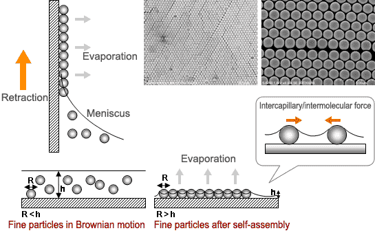NC-DC Dip Coater

Applications:
• Sol‐gel (Gas sensor‐Optical devices‐TCO layer...)
• Layer by layer (SAM, Micelles,…)
• Nano particles (Solar cells‐Hybrid organic‐inorganic devices)
• Convective self-assemblys
Technical specification:
• Displament: 75 mm
• Minixium dipping speed: 0.01 mm/min
• Maximium dipping speed: 150 mm/min
• Maximum weight sample: 1000 g
Description:
Dip coater is used to coat thin films and layer by layer structures. In dip coating process, the substrate which is held by a clip undergoes a linear down‐up motion. While going down it enters into the solution and moves away. Due to the adherence between solution molecules and substrate surface, thin layer will be formed. Having coated one solution, one may want to change the solution and coat another layer on top of previous layer. We have introduced a very user friendly and reliable system allowing a complex stepped process to be programmed. In each Step, up and down ward speed and the relative times can be programmed.
The versatility and simplicity of the ND-DC dip coater make this equipment an optimal system for the manufacturing of different types of homogeneous films: sol-gel, polymeric layers, multilayer structures, biofilms, deposition of antibodies, enzymes, etc. Its broad range of applications includes the fabrication of solar cells, electronic components, sensors, anti-reflection layers, smart coatings, protective layers or biocide layers, among others.

The immersion and withdrawal speed rates range from a minimum of 10 microns per minute to a maximum speed of 150 millimeters per minute with a precision of 0.1 microns. This broad range of programmable dipping rates combined with such high precision enables the fabrication of very thin films by wet deposition, sol-gel processing, self-assembled monolayers or layer-by-layer self-assembly. The ND-DC system is controlled by a user-friendly software based on Windows®, which allows programming different sequences adjusting the dipping parameters such as immersion speed, withdrawal speed, vertical displacement, substrate initial position, immersion time, or the drying time. All these developed sequences can be stored in the PC for its subsequent recovery and use.
In dip coating, substrate is dipped in and dragged out the solution and yield to very thin layer, even just a single layer. Dip coating is sophisticated method to coat self assembled layers, and multilayers from multi solutions. Thickness of layer depends on some parameters like viscosity and solid content of liquid.
-> Video
